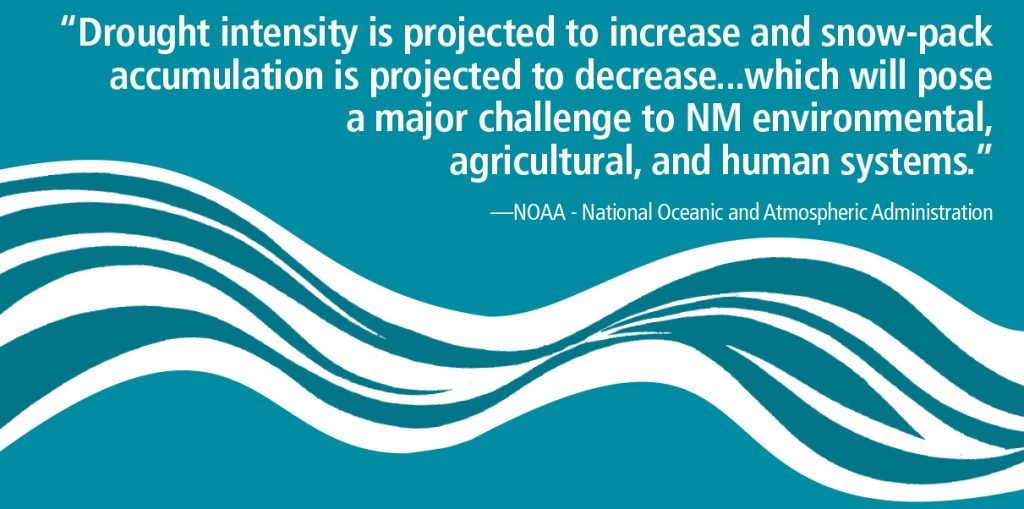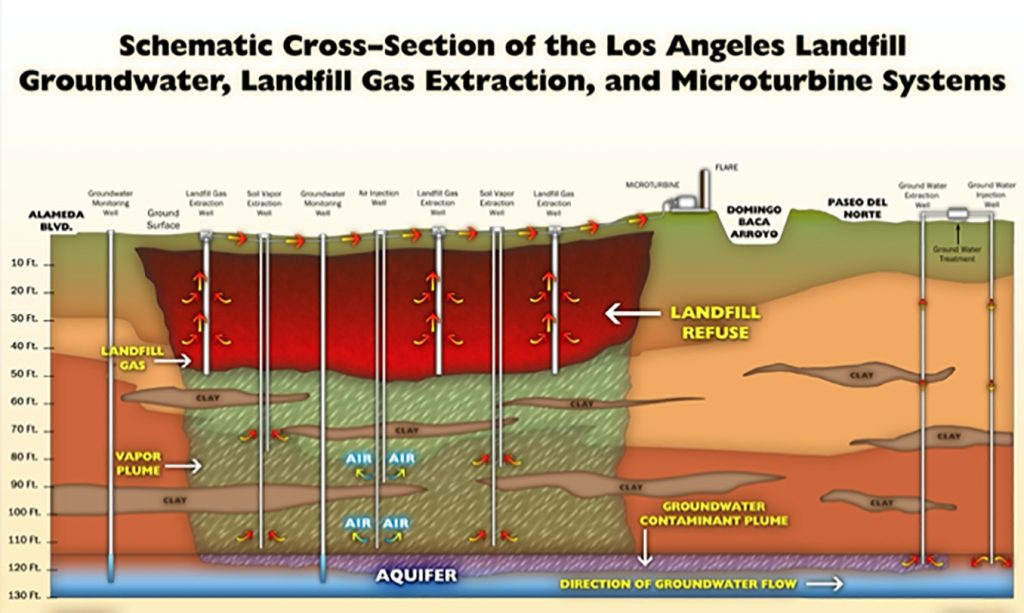Issue 5 – mid Rio Grande Times – July 2021
Collaborators: Sue Brown, Donna Detweiler, Ken Gingerich, Glen Kappy, Adrienne Jones, Deb Scott

Issue 5 – mid Rio Grande Times – July 2021
Collaborators: Sue Brown, Donna Detweiler, Ken Gingerich, Glen Kappy, Adrienne Jones, Deb Scott

Climate is defined as a pattern of precipitation and temperature over years. Drought is an aspect of climate and is defined as decreased rainfall leading to a shortage of water. A deluge of rain can cause flooding, but the overall rainfall can still define that time as a drought. Drought comes in cycles, some lasting much longer than others. For example, the people of Mesa Verde experienced 23 years of drought before they left in 1300. A 50-year drought led to the abandonment of Chaco Canyon between 1140 and 1150, with the population moving to areas with more reliable water for farming. Many of the pueblos along the Rio Grande were established at that time. Since drought comes in cycles, it leaves us constantly optimistic that change for the better is ahead. But is it this time?
The National Oceanic and Atmospheric Administration (NOAA) was formed in 1970 from a loose grouping of climate agencies across various U.S. government departments. Data which had been collected as early as 1807 by volunteers was now available in one place to study trends in climate. Heat and rainfall data from 1895 to present were incorporated into the Palmer Drought Severity Index, a formula for calculations of severity which factor in both heat and rainfall. In 2020, NOAA began a graphic index displaying drought at five different levels with D 0 being abnormal short-term dryness and D 4 being the most severe with widespread loss of crops and pasture. Some climatologists think we in the mid Rio Grande are currently in a drought cycle which began in 2001. Why are our trends troublesome?
Continue readingAcross the United States, there have been many sightings of water monsters. New York, Vermont, Indiana, Montana, Idaho, California, Arkansas, and New Mexico: each has its own story.

Avanyung lives in a marshy spot between Santa Clara Pueblo and Espanola…or at least it used to. Up until the late 1960s, pueblo people regularly reported sightings of this very large water monster with a horse-like head, horns, and a snake-like body. Then it abandoned its small hollow. The retreat of Avanyung back to Posongeh (the Rio Grande) signaled bad times, the withdrawal of the promise of rain for the land, a possible predictor of our current situation.
Continue readingThose of us who live here know that the mid Rio Grande watershed has many sites of natural beauty. Unfortunately, it also has sites of severe pollution. There are three Superfund sites in our watershed as well as other equally egregious pollution problems in Albuquerque. It is important to note that 50 years ago when much of the pollution occurred, landfills were not lined and different types of waste were not segregated. Now there are new policies and also new technology for cleanup. We have to make sure these are being utilized without unnecessary delays.

In 1980, Congress passed Superfund legislation and established a trust fund to clean up hazardous waste. Forty thousand sites were identified immediately and 1,600 have been placed on the National Priorities List (NPL) including three in Albuquerque. The Environmental Protection Agency (EPA) was to administer the fund which would rely on parties responsible for the pollution contributing to their own site’s cleanup. A tax on petroleum and chemical producers was to cover the rest but the former contributed little, and in 1995 the tax on polluting industries ended. By 2003 the Superfund was empty. Any additional cleanup of sites came out of the EPA budget. Only eight sites nationally were cleaned up in 2014 and the agency budget since then has been cut by 30%. So what is happening here in the mid Rio Grande watershed?
The East San Jose neighborhood is small; covering only two and a half square miles between Broadway SW and the river, it contains two Superfund sites. These sites also affect the bordering Mountain View neighborhood. In 1979, trichloroethylene (TCE) was found in wells near the General Electric Aviation plant. Ten years passed before any cleanup was ordered by the EPA. The NM Environment Department which delists sites could not be reached for current information.
The second site is on an 89 acre railroad property where lumber fabrication, the creosoting of railroad ties, and other activities left 12 different “contaminants of concern” in both the soil and groundwater. This included oils containing polychlorinated biphenyl (PCB). This site contaminated two city wells to the extent that they had to be shut down. Cleanup actions began in 1990, are ongoing, and have included removal of tons of debris, excavation and removal of soil, back-filling with clean soil, removal of sludge, and construction of lined recovery trenches. There are five recovery pumps working to clean the groundwater. So far, 850 million gallons of groundwater have been extracted and treated.
The third site is the Fruit Avenue Plume. Originating from dry cleaning chemicals, this was listed as a Superfund site in 2014. Pollution in an aquifer is called a plume. The size and shape of plumes is mainly measured by monitoring wells which try to detect the migrating edges of the pollutant as it moves out from its source. Because plumes move according to rock structures beneath them rather than by gradients leading downhill, this plume was moving north toward the Saw Mill Area. It is quite shallow, threatening the groundwater used by domestic wells in its path. An EPA contractor cleaned the soil at this site by vapor extraction, treated the groundwater with activated carbon, and put a reactive barrier in place to clean the plume. It will take another 10 years before full remediation of PCB and TCE levels are reached. Monitoring of groundwater is ongoing. The EPA considers this site a success because so much urban development has occurred since the cleanup process began.

This schematic gives an idea of how a contaminated landfill area might look and how cleanup is handled. The City of Albuquerque is currently monitoring seven landfills.
Continue reading